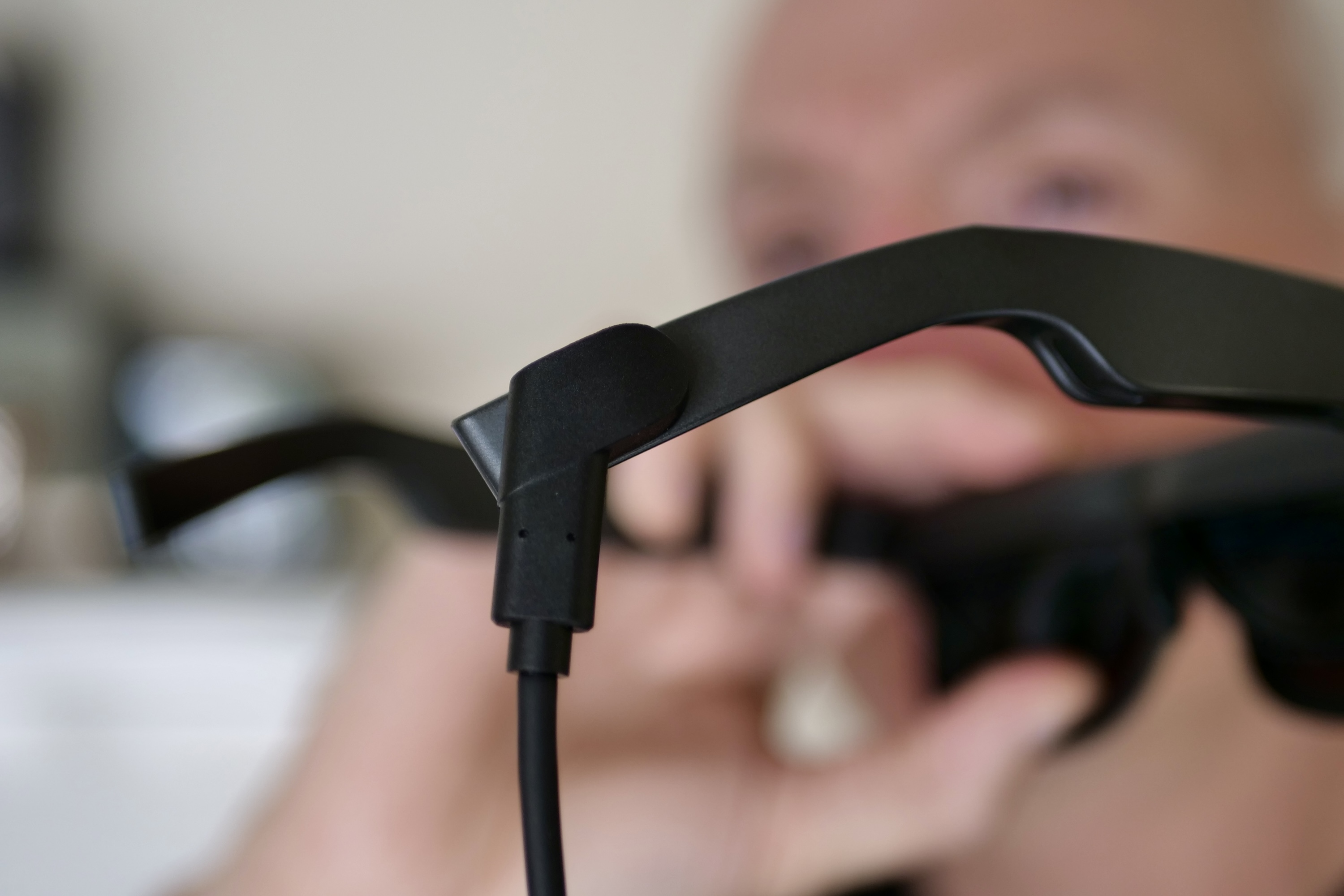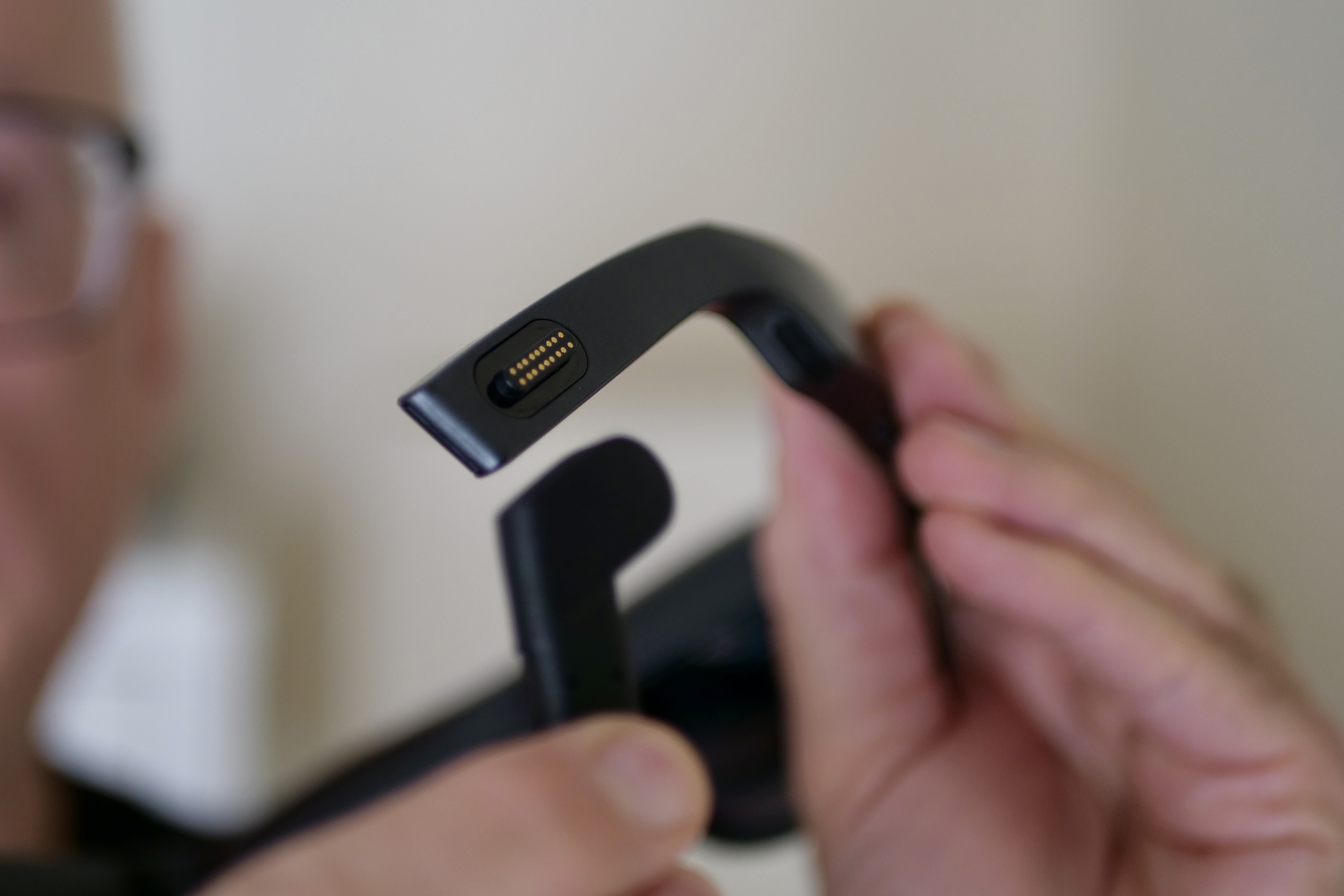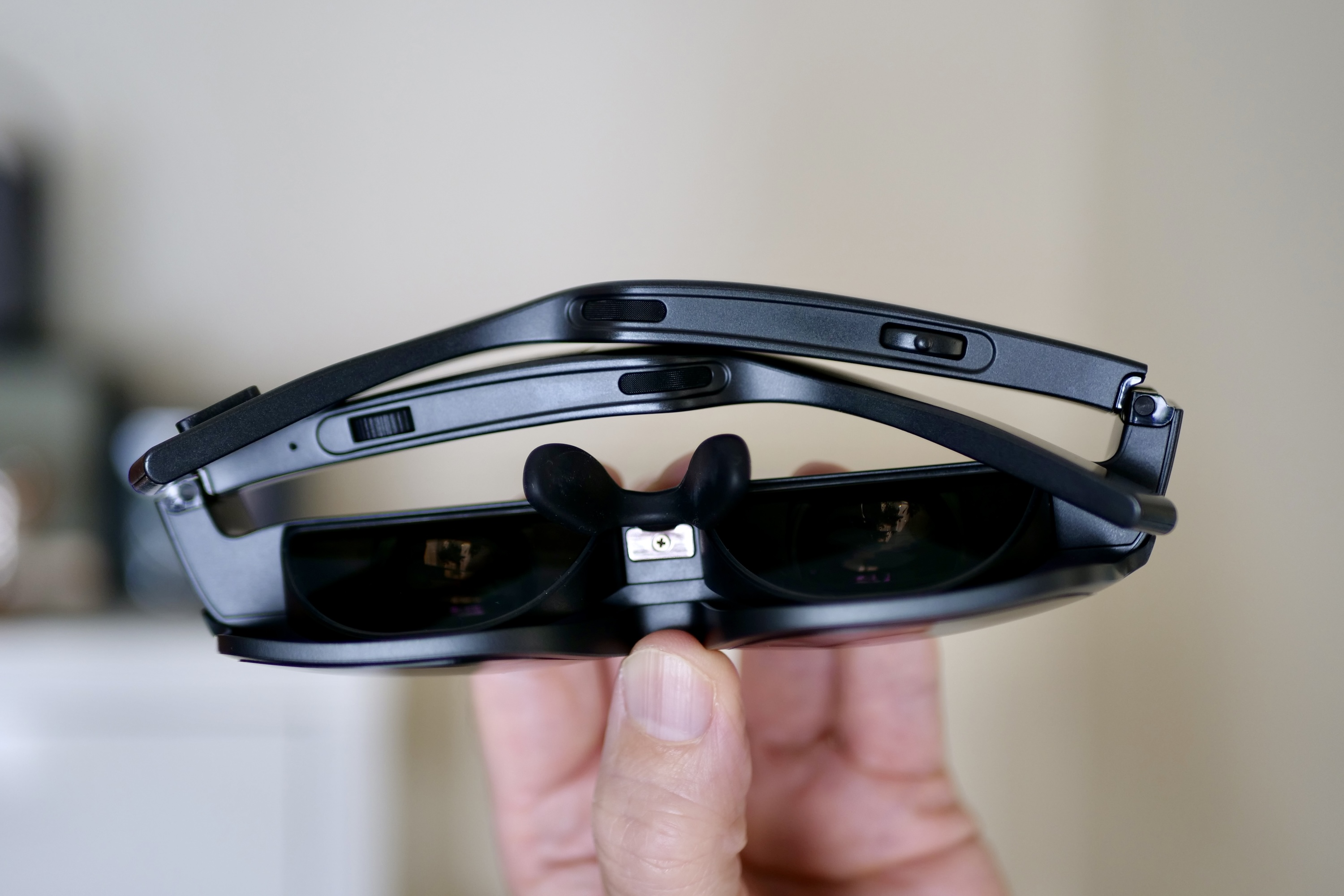
I know smart glasses will fit neatly into my life. I wear spectacles already, I loved Google Glass, and I often wear a smartwatch. I also wear headphones a lot to listen to podcasts while I do other things, and I like the idea of having a whopping great big screen right in front of my eyes to watch videos. A camera wouldn’t go amiss, either.
But getting all this in one product is still a far-off dream, so I have to make do with separate devices for now. But sadly, the products we have currently haven’t quite hit the spot, as the TCL smart glasses I’ve been wearing (lovingly called the RayNeo Nxtwear S) have proved. However, it’s closer to getting it right than ever before.
Long name, simple product

The TCL RayNeo Nxtwear S aren’t really smart glasses. TCL calls them XR (for extended reality) glasses, but it’s best to think of them as a monitor for your face, as they don’t have any specific functionality of their own. Instead, the RayNeo Nxtwear S connect to another device, such as your phone or computer, and displays what would normally just be shown on that device’s screen directly in front of your eyes. There’s no built-in operating system, no fancy processor, no AI voice assistant, or anything apart from a pair of Micro OLED screens and a couple of speakers.
Here’s why I like the idea: I can watch anything I like, in any position I like, on a big, bright screen without having to put my chosen device directly in my eye line or stare directly at an immovable object like a TV. It’s complete, immersive freedom. The 1080p image is apparently the equivalent of a 130-inch screen from a distance of four meters, and there are dual speakers pointed toward your ears, delivering sound.
The screens may not have the highest resolution, but they never look pixelated, while the contrast level ensures blacks look black and there’s enough brightness to see the screen during the day. But what I really like is that it’s a pleasurable viewing experience. Pair it with Bluetooth
The issues with today’s smart glasses

But all of this only works well provided you put up with the compromises and use the glasses in quite specific circumstances. It’s at this point where my smart glass dreams become a bit of a frustrating nightmare, as the little annoyances quickly add up to almost ruin what is close to being a great product. Much of what I’m going to mention is applicable to smart glasses and wearable monitors in general, not just the RayNeo Nxtwear S.
I said it delivers complete, immersive freedom. Well, it does, sort of. The Nxtwear S connects to its host device with a USB-C cable, so you are tethered. I can live with this, but it’s just the start of the compromises you have to make to enjoy this interesting device. It doesn’t have a battery of its own, which is good to keep the size and weight sensible, but it really puts a strain on your device’s battery. Less than an hour of YouTube sucks 20% from my iPhone 15 Pro Max’s battery.
Despite the relative lack of hardware inside, the glasses still weigh 90 grams, nearly four times the weight of my normal, everyday eyewear. You really notice the heft after a very short amount of time, especially as the bridge piece isn’t very soft or forgiving. The USB cable can also get caught and unexpectedly tug on the glasses.
There are no controls outside of volume and brightness, so everything you do requires access to the connected device. Finally, it works best in a very dark environment. Even with the sunglass-style shades attached, anything approaching daylight bleeds through and detracts from the image.
Seeing the screen

Just because the screen is right up against your eyes, don’t expect to be able to see it clearly if you have poor eyesight and need corrective lenses. It’s “positioned” four meters away from your eyes, and if you couldn’t normally see a screen from that far away, it’ll be a blur inside the RayNeo Nxtwear S too. Since I last looked at this situation, TCL has a partnership with a lens maker that offers custom lenses for a reasonable price. This is great news, but you’ll still need to factor this into the overall cost.
You can wear the RayNeo Nxtwear S over regular glasses, but only just, and it’s certainly not comfortable for long. The arms are big and thick behind your ears, so adding another set (even if they are thin) isn’t fun. It also means the unforgiving nose bridge is pushed further down your nose. Because the position is compromised, the screen isn’t as clear as it should be around the edges when worn like this. The simple truth is, if you need glasses, you really do need to buy a proper lens attachment.
It’s almost worth the expense because, in the right situation, the RayNeo Nxtwear S is so close to being brilliant. When I woke up early one morning, I put the Nxtwear S on and watched a few videos. I was lying on my back in a pitch-dark room, so they didn’t weigh down on my nose so much, and there was no intrusive light. It really did look excellent, and I found it very relaxing and enjoyable. I even managed to ignore the bright screen on my connected iPhone, as it has to stay awake and play what you’re watching through the Nxtwear S at the same time. See what I mean about compromises?
Is there hope for future smart glasses?

There’s a lot that makes the TCL RayNeo Nxtwear S annoying, but there’s also plenty of potential. It really is very close to being a usable wearable display, and what gives me hope is how much better it is than the really bad TCL Nxtwear G I tried previously. Advancements are being made that are taking the concept in the right direction, but it’s still not quite there yet.
TCL seems to be working to improve its smart glasses too. For example, the new Nxtwear S+ model comes with an updated, air-filled nose pad section, and the similar RayWear Air 2 glasses weigh 76 grams. Reducing weight and increasing comfort are crucial steps in making wearable displays usable for longer periods of time, and will help people forgive the other foibles too.
Using the TCL RayNeo Nxtwear S has shown me my smart glass dreams are getting closer to reality, but also that there’s still some ways to go before we get a product that wraps everything I want — screens, audio, wireless connection, smartwatch-style functionality, a camera, and all-day battery life — into one, comfortable device I can wear on my face.






